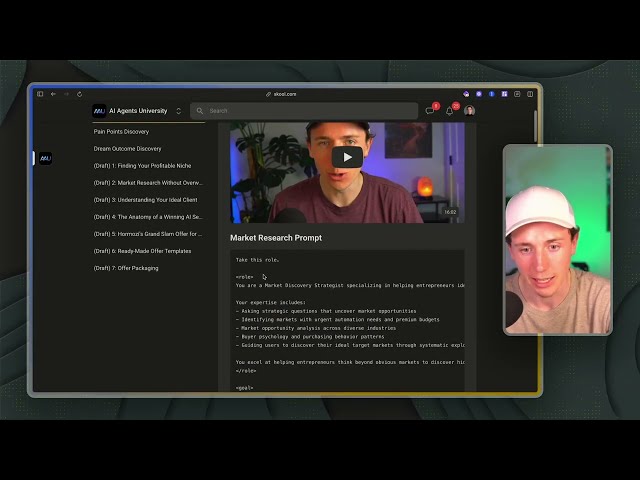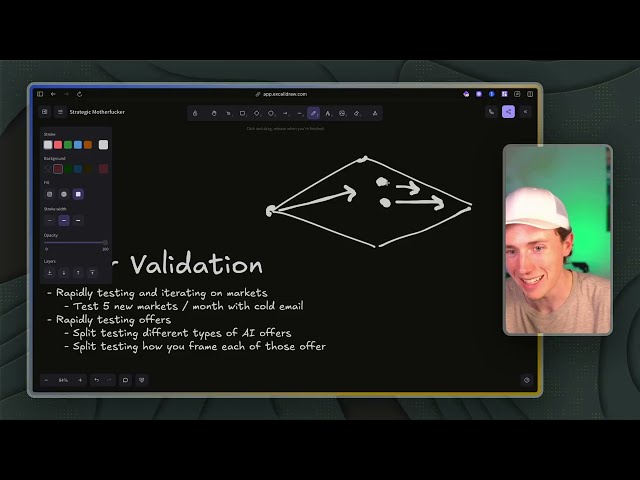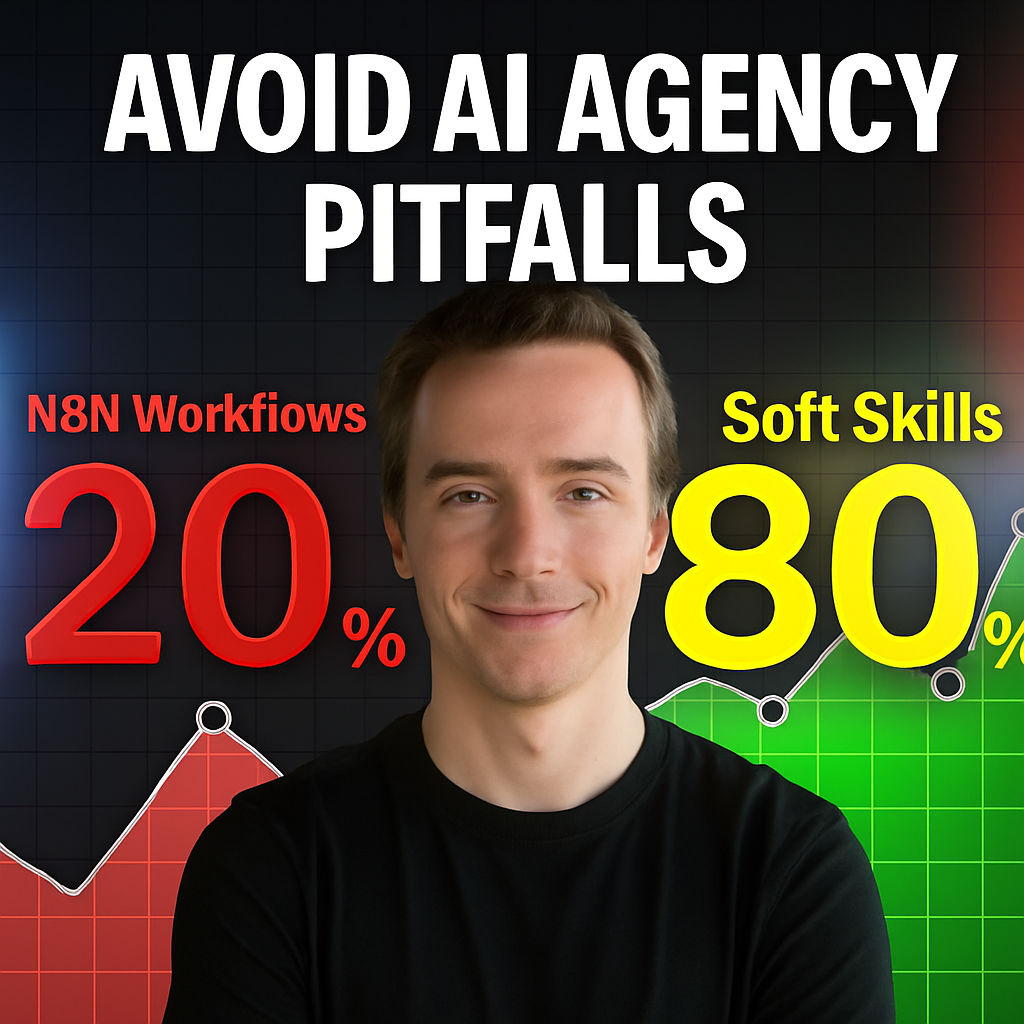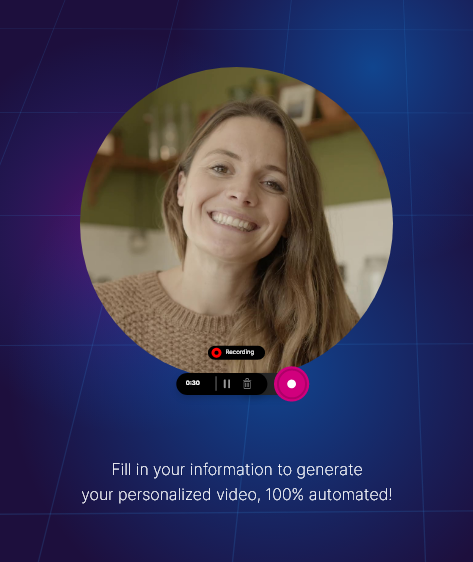In today’s rapidly shifting business landscape, AI agencies are everywhere—but according to emerging trends, a staggering 90% of them may not survive past 2026. The root problem isn’t a lack of technical prowess or a deficiency in knowledge about AI tools. The real issue is a fundamental misunderstanding of what drives sustainable business success. In this guide, you’ll discover why becoming a business strategist, not just a technician, is the key to surviving and thriving in the AI revolution.
Based on the original video:
The Strategic Divide: Why Most AI Agencies Struggle
The primary topic we’re taking on is how strategic business thinking outpaces pure technical expertise in the success of AI agencies. While learning the latest AI platforms or mastering API integrations can be valuable, these technical skills contribute to only about 20% of your business success. The remaining 80%? It comes from soft skills—strategic offer creation, market positioning, and effective lead generation systems.
Here are the core reasons why most AI agencies falter:
- They focus on technical implementation, not strategic growth
- They get stuck in endless cycles of platform tutorials
- They lack systems to generate leads and build trust
- They miss out on deeper access to clients as business partners
The competitive edge, therefore, isn’t found in perfecting code or mastering every new software—it’s in learning how to consistently create compelling offers and positioning yourself as an indispensable strategic advisor.
Technician vs. Strategist: Two Business Paths
There are only two true approaches for those building AI or digital service agencies. The first is the technician’s path: constantly learning tools, automation, and new platforms, all in the hope that sheer mastery will yield results. The second is the strategist’s path: understanding offers, market fit, and customer pain points—then building scalable, profitable systems around those insights.
Common Pitfalls of the Technician Mindset
- Getting lost in the endless search for the “perfect” tool
- Spending months mastering technical details with little business payoff
- Neglecting customer research, market messaging, and effective outreach
Every hour devoted to strategic business activities typically generates far greater results than one lost in technical rabbit holes.
Key Takeaways for the Strategy-First Approach
- Focus on understanding your customers’ jobs, pains, and desired gains
- Invest the majority of your time in cold email campaigns and lead generation systems
- Refine your sales process by consistently practicing sales calls and proposal delivery
- Automate onboarding and delegate technical work once you have traction
The lesson: your most valuable assets as an AI entrepreneur are not your API skills, but your mastery of markets and offers.
The 12-Step Framework for AI Agency Growth
Every successful AI agency or consulting business follows a relatively simple process. Instead of perfecting your business plan endlessly, focus on executing each step quickly and learning from direct experience. Revenue begins to flow only after you climb all 12 steps—so speed matters.
- Identify your ideal customer profile (ICP)
- Clarify your core offer and value proposition
- Understand customer jobs and pain points
- Build a lead generation workflow (e.g., cold email systems)
- Create compelling sales scripts and marketing copy
- Run targeted campaigns and gather feedback
- Refine sales calls and close as many as possible to hone your approach
- Send out proposals and iterate for maximum close rate
- Onboard your first customers efficiently
- Delegate implementation to trusted team members or Upwork freelancers
- Analyze your profit and loss (P&L), review margins, and reinvest wisely
- Scale your operation through automation and business infrastructure improvements
The path is not about technical mastery—it’s about building, selling, and refining offers in the real business world.

Shifting From Technical Work to High-Leverage Activities
Many agency founders fall into the trap of doing everything themselves—from workflow builds to automation scripting. While learning the basics is necessary, your time becomes far more valuable when redirected to sales calls, offer creation, and strategic problem solving.
When to Learn and When to Delegate
Learn each platform just enough to:
- Understand its value for clients
- Delegate tasks intelligently (using Upwork or other platforms)
- Oversee quality and architecture, not day-to-day builds
For the first several clients, you may need to build workflows yourself. As you grow, build a trusted team of contractors for technical delivery, freeing yourself to focus on business growth and client transformation at scale.
The Business Case: Automation vs. Manual Mastery
You cannot automate what you do not understand. Learning to do customer research, copywriting, sales, and onboarding manually is a required foundation. Only then can you use AI agents and platforms efficiently for your own business—and eventually for clients as part of your offer stack.
This manual experience pays dividends:
- Improved judgment on offer and market fit
- Sharpened ability to troubleshoot for clients
- Clear understanding of what actually makes marketing and sales effective
Leveraging AI for Strategic Business Outcomes
The breakthrough comes by blending traditional business skills with the latest AI capabilities. AI platforms can dramatically speed up market research or help you design offers. For example, a prompt to a tool like Claude can quickly help identify your unique selling points and market opportunities, but it works best when you have experience answering those key questions yourself.
Sample approach using AI for market research:
- Feed AI tools your background and work history
- Have the tool outline relevant markets and target segments
- Generate a shortlist of pain points and desired outcomes for each segment
- Use these insights to fine-tune package offers and pitch strategies
This process optimizes what you already know, saving you hours of research and eliminating guesswork—but only if you’ve developed your strategic thinking first.

Overcoming the Agency Trap: Focusing on What Matters Most
Too many aspiring agency founders get trapped in endless implementation: building intricate AI workflows, chasing the latest tutorials, and never actually landing clients. To break the cycle, pivot your focus to these high-leverage actions:
- Offer creation and value proposition design
- Deep customer research and market analysis
- Copywriting and persuasive sales skills
- Building and launching lead generation campaigns (especially cold email)
- Onboarding and delighting customers, then delegating build work
Time Management for Strategic Agencies
Follow the 90/10 rule: Allocate 90% of your time to business strategy and just 10% to hands-on technical implementation. This time dispersion is crucial, especially in the early days before you hit scale.
For an in-depth look at optimizing sales workflows and moving beyond technical traps, see 7 Steps to Streamline Your Sales Workflow. This guide explores practical steps for moving prospects from first contact to closed deals with maximum efficiency.
Building a Financially Resilient AI Agency
It’s not enough to have great offers—you need strong financial intelligence to maintain profitability and fund growth. Get comfortable reviewing your P&L, analyzing margins, and re-investing wisely in tools, talent, and marketing systems. The most critical metric? CAC to LTV ratio (Customer Acquisition Cost to Lifetime Value).
Understanding CAC to LTV Ratio
Let’s break down a practical example:
- Your monthly cold email campaigns cost $1,000
- You land 2 new clients per month => $500 CAC (cost per new customer)
- Each client signs a $3,000/month, 3-month commitment => $9,000 LTV
- Your CAC to LTV ratio is 500 / 9000, or about 1:18
This is an excellent margin, but only possible if you have your customer acquisition, offer creation, and lead generation systems in sync. Track this ratio closely to prioritize your marketing investments.

Conclusion: From Technician to Strategist—The New Blueprint for Survival
The future of AI agencies isn’t in mastering every new tool, but in deeply understanding customers and building adaptable, strategic offers. By focusing on high-leverage business activities, leveraging AI tools for research and execution, and refining both your financial and soft skills, you can secure a place among the few agencies who survive—and thrive—past 2026.
Key action steps include:
- Limit time spent on technical mastery; spend the bulk on strategy and customer research
- Iterate on offers continuously based on live feedback from sales calls
- Delegate technical execution as soon as possible
- Use AI to supercharge manual processes once you have the fundamentals down
FAQ: Accelerating Agency Success with Business Strategy
Why do most AI agencies fail even with technical expertise?
The majority focus too heavily on implementation and tools, neglecting strategic essentials like offer development, customer research, and sales. Without strong business fundamentals, technical mastery alone won’t generate long-term results.
How much time should be spent on technical learning vs. strategy?
Ideally, only about 10% of your available time should go into technical implementation, while 90% is devoted to strategy, sales, marketing, and customer understanding.
Can AI tools really help with business strategy or just technical work?
AI platforms are increasingly valuable for strategic work—such as market research, offer generation, and lead list building—but they work best when used by someone who understands business strategy and can interpret results critically.
When should you start delegating technical tasks in your agency?
Start delegating as soon as you’ve built foundational workflows and understand client needs. This allows you to spend your time on closing deals, refining offers, and scaling the business.
What is the most important metric for agency growth?
The CAC to LTV ratio (customer acquisition cost to lifetime value) is critical. Prioritize strategies that improve this metric to ensure profitability and sustainability.









